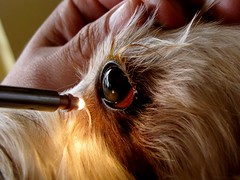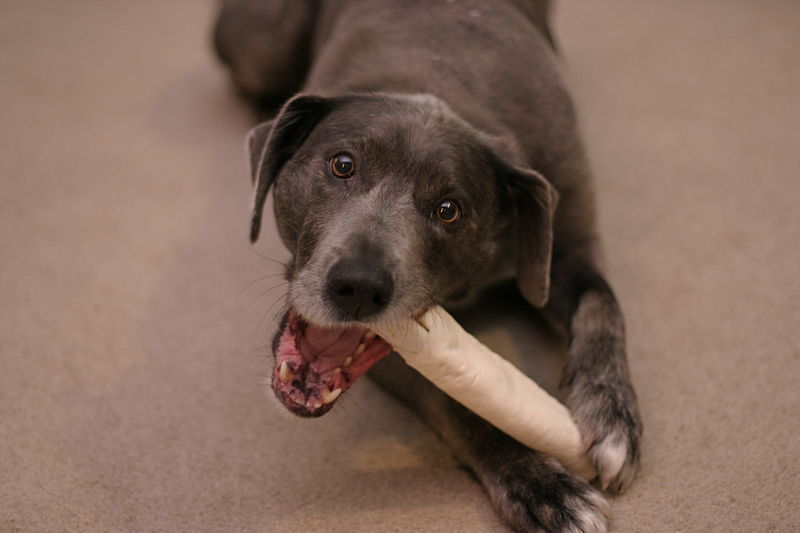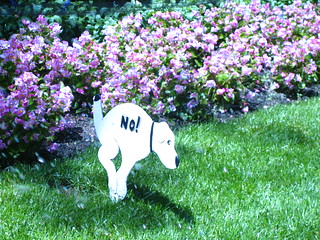 It’s a good practice to get in the habit of performing monthly quick checkups on your pets in the comfort of your own home. You never know when a lump or other malady might show itself. Getting a “baseline reading” of your pet’s body will help you to detect early on when they might be having issues and let you know when it is time to make an appointment with your veterinarian. This article focuses on determining your pet’s baseline vital signs so that you can determine when something is amiss.
It’s a good practice to get in the habit of performing monthly quick checkups on your pets in the comfort of your own home. You never know when a lump or other malady might show itself. Getting a “baseline reading” of your pet’s body will help you to detect early on when they might be having issues and let you know when it is time to make an appointment with your veterinarian. This article focuses on determining your pet’s baseline vital signs so that you can determine when something is amiss.
Temperature: Body temperature is measured rectally in pets (yikes). I keep a spare digital thermometer for my dogs and use a healthy coat of Vaseline if I need to take their temperature. It can come in handy when you are trying to diagnose your sick pet. A dog’s temperature is usually between 100-102.5 degrees Fahrenheit. Any pet with a temperature under 99 or over 104 should see a vet immediately.
Heart Rate: It is best to get a good reading on heart rate when your pet is calm and relaxed, perhaps after a massage or good belly rub. Find the heartbeat on the left hand side of the ribcage, near where the elbow fits into the chest. Count the number of heartbeats for 15 seconds then multiply this number by 4. This is your pet’s resting heart rate. Dog’s heartbeats will accelerate and decelerate with each breath. This is normal! Your pet’s normal heart rate will depend upon the size of your animal. Larger dogs have slower heart rates than lap dogs.
 Respiratory Rate: While your pet is relaxed and calm, maybe even sleeping, it is a good time to determine your pet’s respiratory rate and normal breathing pattern. Avoid measuring this when your dog is panting. Count the number of times your pet inhales for 1 minute. This is the respiratory rate. Also note if it requires your pet any extra effort to inhale or exhale. This function should be smooth and effortless. If your pet is having difficulties, contact a vet immediately.
Respiratory Rate: While your pet is relaxed and calm, maybe even sleeping, it is a good time to determine your pet’s respiratory rate and normal breathing pattern. Avoid measuring this when your dog is panting. Count the number of times your pet inhales for 1 minute. This is the respiratory rate. Also note if it requires your pet any extra effort to inhale or exhale. This function should be smooth and effortless. If your pet is having difficulties, contact a vet immediately.
 Mucous membranes: Your pet’s mucous membranes (read: gums and eyelids) are important in diagnosing problems with oxygenation and blood flow. Normal gum color is pink, but some dogs have pigmented gums (Barret’s are black), and this makes determining if the color is normal difficult. You can open the eye and gently lift the eyelid to get a good look at the coloring. Any membrane that is pale, white, blue or yellow should be investigated by a veterinarian. While you’re examining the mucous membranes, do a quick test for capillary refill time. This is also a good diagnostic tool to determine if blood and oxygen are flowing normally. Briefly apply pressure to the gums and release. The area should turn pale (where you applied pressure) but will rapidly return to the normal color. This refill time should be no longer than 3 seconds but should also not take less than 1 second.
Mucous membranes: Your pet’s mucous membranes (read: gums and eyelids) are important in diagnosing problems with oxygenation and blood flow. Normal gum color is pink, but some dogs have pigmented gums (Barret’s are black), and this makes determining if the color is normal difficult. You can open the eye and gently lift the eyelid to get a good look at the coloring. Any membrane that is pale, white, blue or yellow should be investigated by a veterinarian. While you’re examining the mucous membranes, do a quick test for capillary refill time. This is also a good diagnostic tool to determine if blood and oxygen are flowing normally. Briefly apply pressure to the gums and release. The area should turn pale (where you applied pressure) but will rapidly return to the normal color. This refill time should be no longer than 3 seconds but should also not take less than 1 second.
Hydration: A properly hydrated pet should pass the ‘scruff test’ with flying colors. Gently grab your dog’s scruff (the loose skin on the back of the neck). Release it. The skin should immediately spring back into normal position. If there is a delay, your pet may be dehydrated.
Get into the habit of performing these tests on your pet every few months to keep tabs on their vital signs. I almost forgot the most important part: write down the results and keep them somewhere safe, where you will have access to them in an emergency situation. I use the Pet First Aid app to keep track of my pet’s information (I reviewed this app last year).
 Offering your pet a sweet or savory treat seems like it would be a simple gesture of affection, but with so many treats and chews to choose from sometimes it can be rough to find the right one to buy. If you’re fortunate enough to be able to take your pet inside your local pet store to pick out his or her own favorites you’re a step ahead, but if you’re on your own while shopping it may be a little tougher to navigate to the the right products. Here is a brief description of some of the best dog treats and chews and why they may or may not suit your pet. Please remember that no matter what tasty tidbit you offer your pet, observe them closely to make sure they’re enjoying their snack safely.
Offering your pet a sweet or savory treat seems like it would be a simple gesture of affection, but with so many treats and chews to choose from sometimes it can be rough to find the right one to buy. If you’re fortunate enough to be able to take your pet inside your local pet store to pick out his or her own favorites you’re a step ahead, but if you’re on your own while shopping it may be a little tougher to navigate to the the right products. Here is a brief description of some of the best dog treats and chews and why they may or may not suit your pet. Please remember that no matter what tasty tidbit you offer your pet, observe them closely to make sure they’re enjoying their snack safely. That Pet Blog That Pet Place Pet Blog
That Pet Blog That Pet Place Pet Blog









